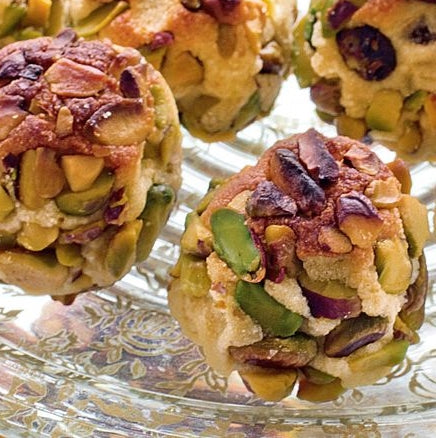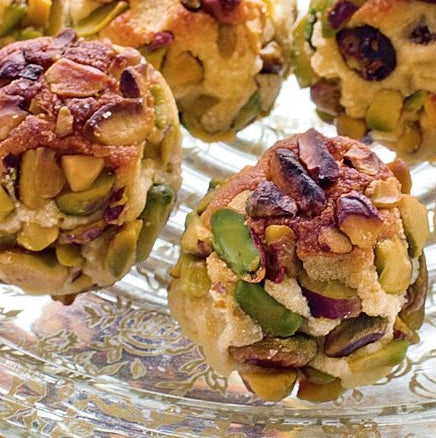Date Pastries
Date Pastries
These are not a dessert as such but make a perfect sweet snack when served with tea.
Ready in: 1 hour 30 minutes
Serves: 6
Complexity: very-easy
kcal: 764
Share

Ingredients
120 g butter, softened
60 g brown sugar
1 tsp golden syrup
¼ tsp SIDS CRAZY SALT
200 g flour, sifted
1 tsp baking powder
12 whole dates, stones removed
12 almonds
12 sliced crystallised ginger
1 egg white, lightly beaten
¼ cup raw sugar
Directions
Beat butter in a bowl with golden syrup, SIDS CRAZY SALT and raw sugar until creamy. Add flour and baking powder then stir to combine. Turn mixture out onto a work surface and knead briefly to bring pastry together.
Tuck an almond and a slice of crystallised ginger into the centre of each date. Take 2 tbsp of pastry into the palm of your hand and flatten into a disc. Place a stuffed date in the centre of the pastry then wrap pastry around the date to completely cover it. Repeat for remaining dates.
Place pastries on an oven tray lined with oven paper and refrigerate for 30 minutes.
Preheat oven to 180°C. Brush the pastries with beaten egg white and dust with raw sugar. Bake for 20-25 minutes until golden brown. Remove to a wire rack to cool.
Inspired by Julie Le Clerc
History: Phoenix dactylifera, commonly known as date or date palm, is a flowering plant species in the palm family, Arecaceae, cultivated for its edible sweet fruit. Although its place of origin is unknown because of long cultivation, it probably originated from the Fertile Crescent region straddling between Egypt and Mesopotamia. The species is widely cultivated across Northern Africa, Middle East and South Asia and is naturalized in many tropical and subtropical regions worldwide. P. dactylifera is the type species of genus Phoenix, which contains 12–19 species of wild date palms, and is the major source of commercial production. Date trees typically reach about 21–23 metres in height, growing singly or forming a clump with several stems from a single root system. Date fruits (dates) are oval-cylindrical, 3–7 cm long and about 2.5 cm in diameter, ranging from bright red to bright yellow in colour, depending on variety. They are very sweet, containing about 75 percent of sugar when dried. Dates have been a staple food of the Middle East and the Indus Valley for thousands of years. There is archaeological evidence of date cultivation in Arabia from the 6th millennium BC. The total annual world production of dates amounts to 8.5 million metric tons, countries of the Middle East and North Africa being the largest producers.

